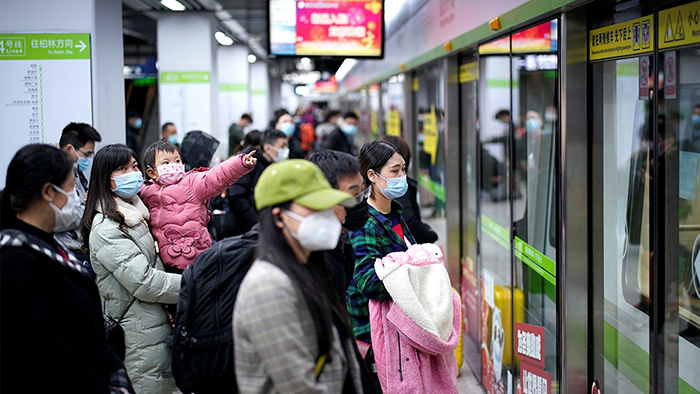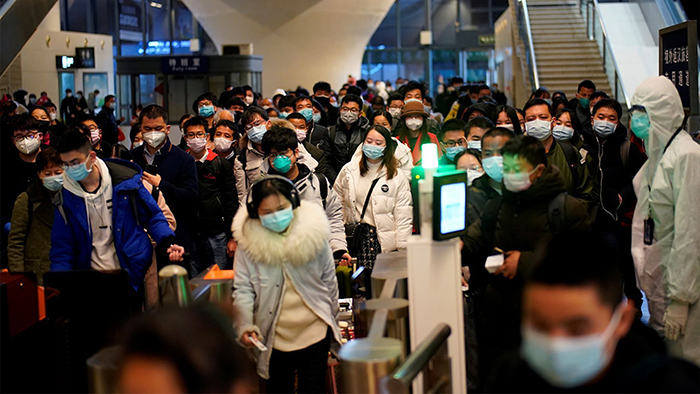The Chinese city where the coronavirus was first detected at the end of last year has begun to slowly re-open after more than two months under strict quarantine restrictions.
Crowds of people – many of them wearing masks – were photographed arriving at the Wuhan train station on Saturday morning, marking a turning point in China’s fight against COVID-19.

“It makes me very happy that I can see my family,” Guo Liangkai, a 19-year-old student whose one-month work stint in Shanghai stretched to three months due to the clampdown on movement, told Reuters.
He was greeted by his mother at the train station.
“We wanted to hug but now is a special period so we can’t hug or take any actions like these,” Guo added. “Although the epidemic situation in China has taken a turn for the better, it has not been completely destroyed from the root.”
Authorities in Wuhan – the sprawling capital of the central province of Hubei – began to ease the travel restrictions, allowing people to enter the city again. They are allowed to enter the city but not leave it, according to some reports.

The move comes after China has seen a sharp decrease in reported coronavirus infections.
Wuhan accounts for about 60 percent of China’s coronavirus cases, but the tally has fallen sharply in recent weeks, a sign that the measures are working – a fact that Chinese President Xi Jinping has touted in recent days. The last confirmed locally transmitted case of the virus in Wuhan was on Monday, Reuters reported.
However, analysts claim that any self-back-patting from China should be taken with a large grain of salt.
Gordon Chang questioned why the Western world would believe Beijing since the country has been accused of multiple cover-ups and spreading misinformation that may have accelerated the spread of the coronavirus around the world.
WORLD HEALTH ORGANIZATION UNDER THE MICROSCOPE: WHAT WENT WRONG WITH CORONAVIRUS?
However, the skepticism from the west has not deterred residents returning to work in Wuhan from applauding the positive effects of the restrictions to lower infections rate.
“I think the resumption of work represents a kind of hope. It at least shows that China is victorious,” said Zhang Yulun, 35, told Reuters.
Liu Dongru, of the province’s health commission, warned that precautions are still necessary despite parts of Wuhan begin reclassified as “low-risk” areas.
Authorities in Wuhan appeared not to be taking any chances as the temperatures of passengers were being monitored by staff dressed in full-body protective gear and police kept a watchful eye on passers-by.
On Saturday, officials reported 54 new cases from the previous day – all so-called imported by foreign travelers.
More than 600,000 people around the world have contracted the virus and there have been more than 28,000 deaths. More than 135,000 have recovered worldwide.

